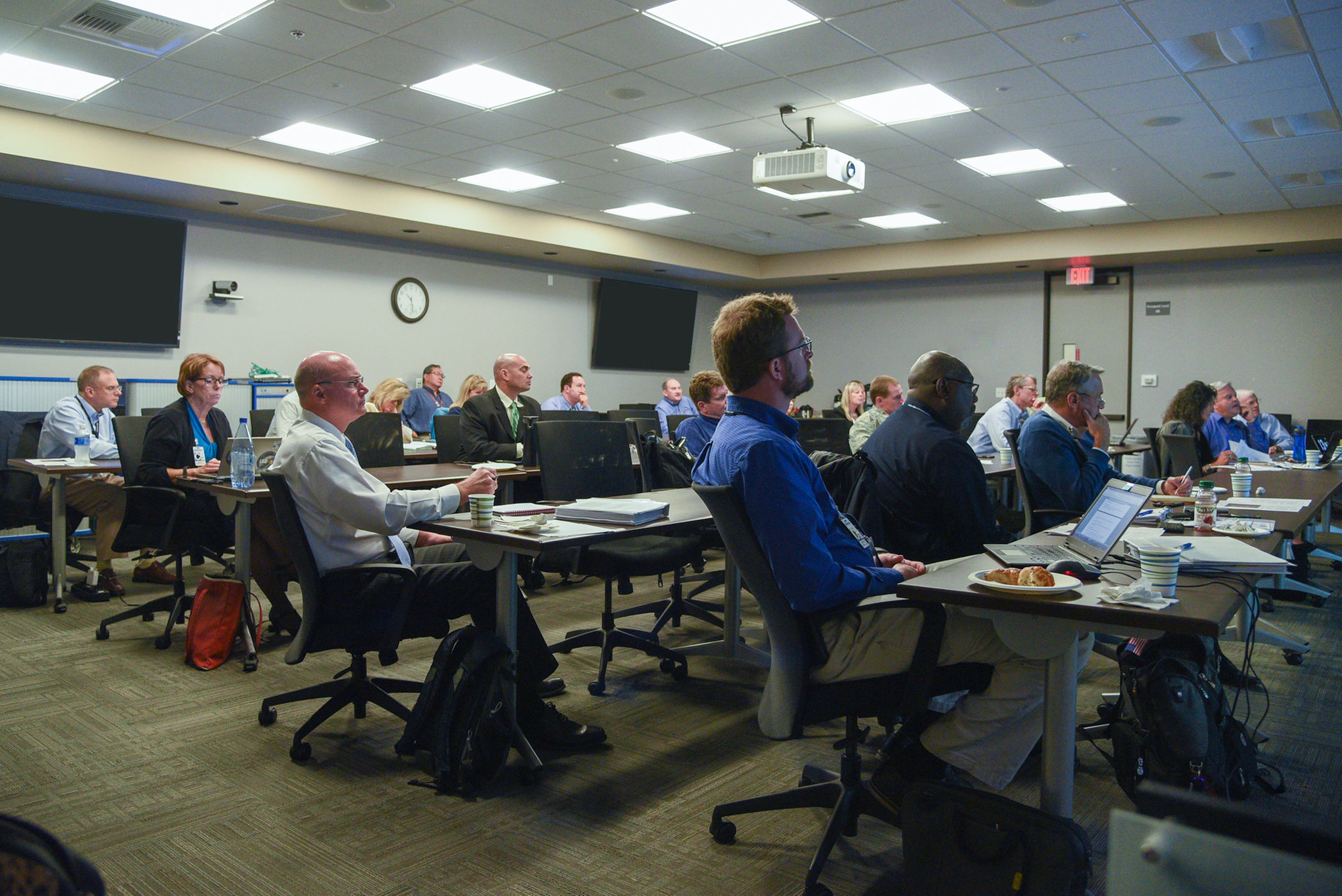Incoming! How NASA and FEMA Would Respond to an Asteroid Threat

It's a scary scenario: an asteroid headed for Earth, just four years away from slamming into our home planet. It may be too short a span to plan an asteroid-deflection mission, but it's long enough to present very different challenges from those of a more typical crisis, like a hurricane or earthquake.
NASA and the Federal Emergency Management Agency (FEMA) came together Oct. 25 to plan a response to such a hypothetical event. In a "tabletop exercise," a kind of ongoing simulation, the two agencies tested how they would work together to evaluate the threat, prevent panic and protect as many people as possible from the deadly collision.
"It's not a matter of if, but when, we will deal with such a situation," Thomas Zurbuchen, NASA's Science Mission Directorate's new associate administrator, said in a statement. "But unlike any other time in our history, we now have the ability to respond to an impact threat through continued observations, predictions, response planning and mitigation." [In Images: Potentially Dangerous Near-Earth Asteroids]
The exercise, held in El Segundo, California, brought together representatives from NASA, FEMA, NASA's Jet Propulsion Laboratory (JPL), the Department of Energy's national laboratories, the Air Force and the California Governor's Office of Emergency Services, JPL officials said in the statement.
It was the third such exercise; previous ones had allowed for a deflection mission, but in this simulation, there was too little time for that type of response.
"It is critical to exercise these kinds of low-probability but high-consequence disaster scenarios," FEMA Administrator Craig Fugate said in the statement. "By working through our emergency response plans now, we will be better prepared if and when we need to respond to such an event."

The asteroid in this test scenario appeared to be between 300 and 800 feet (100 to 250 meters) long in the first simulated measurements the participants were given. At first, the probability of a 2020 impact was only 2 percent, but as the group continued to simulate tracking it over time and the fictional months went by, the impact probability rose to 65 percent — and then 100 percent, in May 2017. By November of that year, in the scenario, they found that it would hit across Southern California or nearby in the Pacific Ocean.
Sign up for the Live Science daily newsletter now
Get the world’s most fascinating discoveries delivered straight to your inbox.
The research laboratories' scientists calculated the impact's footprint, the population that would be displaced, the effect on infrastructure and other data that would slowly become clear over such an asteroid's approach. That gave the participants the information they needed to plan for an evacuation process, and decide how to convey necessary information to the public in the most effective way over the course of the asteroid's approach (plus debunk dangerous misinformation and rumors).
"The high degree of initial uncertainty, coupled with the relatively long impact warning time, made this scenario unique and especially challenging for emergency managers," Leviticus A. Lewis, chief of FEMA's National Response Coordination Branch, said in the statement. "It's quite different from preparing for an event with a much shorter timeline, such as a hurricane."
NASA's Planetary Defense Coordination Office, established in January, supervises NASA's efforts to track asteroids and other approaching near-Earth objects (NEOs) and coordinates its interactions with the other U.S. agencies that would deal with a potential impact and decide whether to try a deflection mission or coordinate an emergency response, as in this exercise. Europe has a similar NEO Coordination Centre in Italy.
"These exercises are invaluable for those of us in the asteroid science community responsible for engaging with FEMA on this natural hazard," NASA Planetary Defense Officer Lindley Johnson said in the statement. "We receive valuable feedback from emergency managers at these exercises about what information is critical for their decision making, and we take that into account when we exercise how we would provide information to FEMA about a predicted impact."
Although deflection wasn't an option for this training scenario, there is research into that area. For example, NASA's Asteroid Redirect Mission, which recently finished its first planning stages, is largely a sample-collection mission, to pull a boulder off an asteroid's side — but it is also slated to test out pulling the asteroid's orbit slightly off course using the spacecraft and sample's gravitational pull.
Philip Lubin, an astrophysicist at the University of California, Santa Barbara whose laser propulsion system has been incorporated into the Breakthrough Starshot program to send a probe to neighbor star system Alpha Centauri, originally intended the system to zap and deflect incoming asteroids.
Email Sarah Lewin at slewin@space.com or follow her @SarahExplains. Follow us @Spacedotcom, Facebook and Google+. Original article on Space.com.










